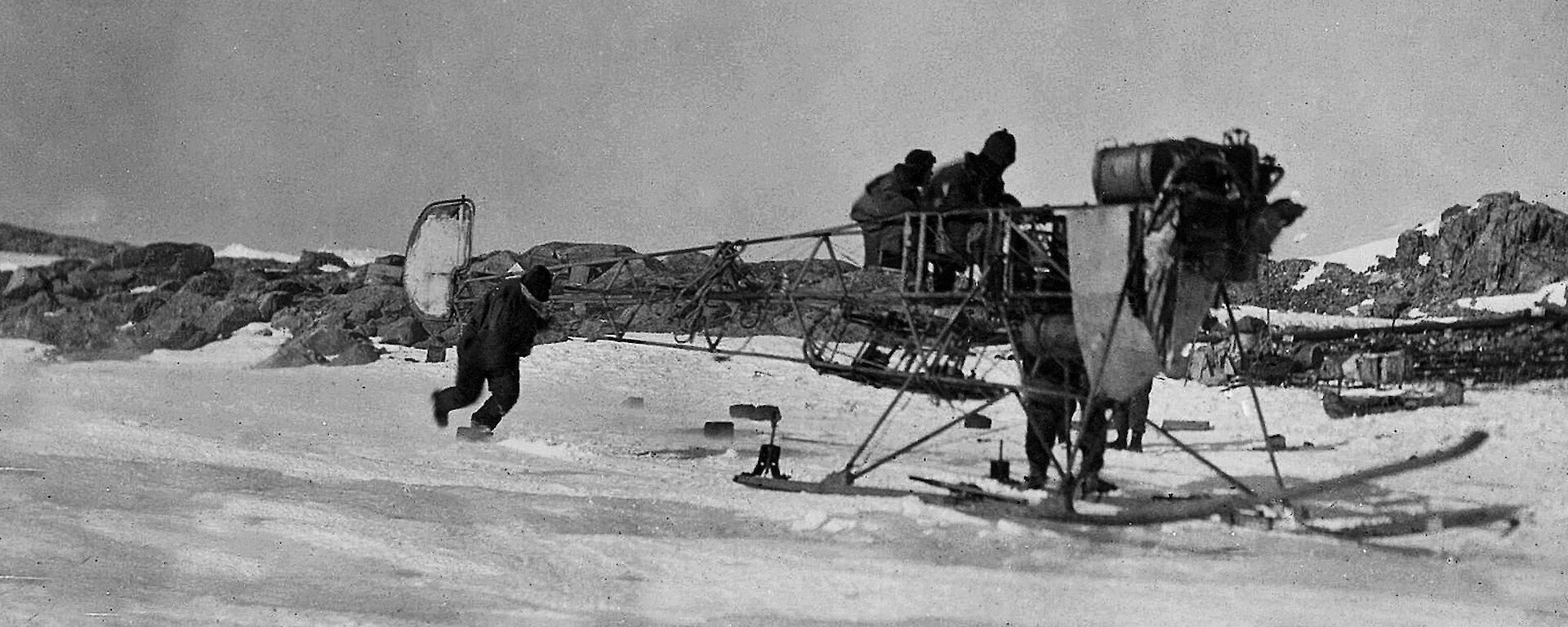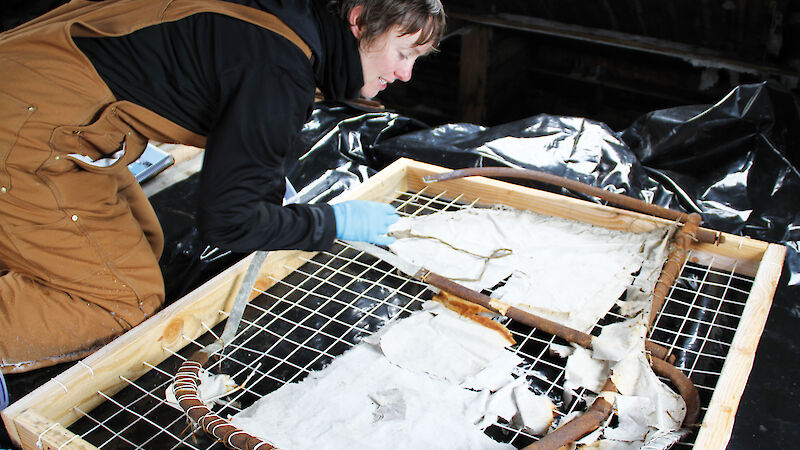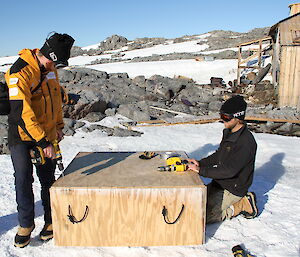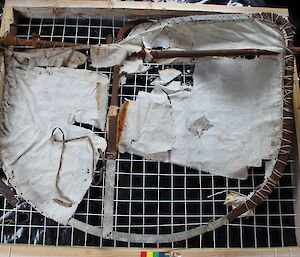A piece of Antarctic history was returned to Australia this summer and will become the centrepiece of a touring exhibition celebrating the 1911–14 Australasian Antarctic Expedition (AAE). The tail of the Vickers monoplane, which travelled south with Sir Douglas Mawson’s pioneering expedition 100 years ago (Australian Antarctic Magazine 18: 30–32, 2010), was returned to Hobart in January. The fragile metal, twine and canvas relic was rapidly deteriorating in its icy home and was deemed a priority for urgent restoration.
Mawson envisioned that the monoplane would be used to map the Antarctic continent, but it was damaged during a test flight in Adelaide just prior to the departure of the AAE. Despite this, Mawson pushed ahead with plans to take the plane south, removing the wings and converting the frame into an air tractor, which was to be used to tow sledges across the ice. It only made a few short depot runs before the engine irreparably broke down. The engine, propeller and other items, probably including the tail piece, were removed and the frame was abandoned on the shores of Boat Harbour when the Expedition left Commonwealth Bay in 1913.
It wasn’t until the 2002–03 summer season that the tail was re-located, buried under the ice within the Workshop of Mawson’s Huts. It was excavated and stabilised by conservation workers from the Mawson’s Huts Foundation and stored on the mezzanine level of the Main Living Quarters until this summer. Materials Conservator, Antonia Ross, said the extensive work required on the tail meant it had to be returned to Australia.
‘Unfortunately the humidity inside the hut is over 95%, which really affected the condition of the tail. The metal frame is warped and corroding, the textile material is fragmented and the twine binding it all together is extremely brittle,’ Ms Ross said.
‘Getting the tail stable enough to move was a difficult task, but the process we chose worked really well. We laid it out on hard plywood backing and used lots of cling wrap to keep it in place and buffering foam to prevent any movement during the week-long sea voyage to Tasmania.’The tail was then packed in a transport crate and flown out to the L’Astrolabe. It was transported in the cargo storage area of the ship, which allowed it to gradually acclimatise to the increasing temperature. Silica gel was placed within the foam supports to absorb any moisture.
The tail will now head to the Western Australian Museum for conservation. Head of Materials Conservation at the museum, Dr Ian Godfrey, said it’s a challenging and exciting project.
‘It’s obviously a very complex object. There are two different types of metal on there, there’s fabric and twine in various states of disrepair, so it’s going to be difficult to treat. Once we have restored the tail piece, we will have to prepare a support for it so it can be mounted safely and displayed,’ he said.
‘The tail is a significant part of Australia’s Antarctic history. It was a good example of Mawson’s innovation and that’s why it’s so important to conserve it. He took the first radio down there to ensure communication was possible and he wanted to be the first to fly around as well. I think in a lot of ways, Mawson was lucky the plane crashed in Adelaide before he left because it would have crashed in Antarctica, with tragic consequences. As an air tractor, it didn’t go very far and wasn’t a great success, but it was still symbolic of what he was trying to do there.’The tail will travel around the nation as part of the AAE Centenary Exhibition Traversing Antarctica: the Australian Experience, curated by the National Archives of Australia. Mawson’s Huts Foundation is still hopeful of locating the remainder of the air tractor frame and will continue the search next season.
NISHA HARRIS
Corporate Communications, Australian Antarctic Division





